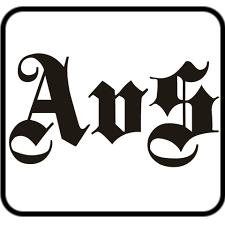Tourist tax increases in autumn
24.07.2020 Gstaad LivingAs of 1 November, the tourist tax will rise in the municipalities of Saanen, Gsteig and Lauenen. The additional revenue will be used for infrastructure projects in the region.
For the first time in 14 years, the tourist tax in the region will be increased, on average by 40 percent. Oliver Waser, president of Gstaad Saanenland Tourismus (GST), explains: “The use of the funds is tied to infrastructure projects in the region. We have good ideas, various projects have been launched and are nearing completion. The tourist tax is paid by the guests and benefits them directly.”
Investments in summer and winter
Projects include the Station adventure world in Saanen and the adventure trails between Saanen and Gstaad and between Saanenmöser and Schönried. They are part of the Saaniland concept, which is primarily aimed at families. In addition to Saaniland, GST is implementing specific projects in winter, summer and in the digitalisation.
Last winter a test phase with the use of technical snow on the cross-country ski tracks in Schönried had begun. “In general, the provision of winter offers is taking up more resources than just a few years ago due to global warming,” says Andrea Riggenbach, head of finance at GST. In summer, the play and barbecue areas will be upgraded and the network of trails for hikers and bikers will be improved in cooperation with the local authorities.
“For our overnight guests we want to introduce a new guest card in summer 2021. This guest card will make it easier for our guests to use the mountain railways and public transport, for example, but also to access unique experiences”, says Flurin Riedi, managing director of GST.
Right time?
After the shutdown, tourism has resumed with increased hygiene and safety measures. Due to the lack of major events, it will be impossible to repeat the peak sales of the previous season. The question therefore arises as to whether the timing of the tourist tax increase is right. Riedi explains: “The process was initiated two years ago, when the corona crisis could not have been anticipated.” Riedi stresses that it must be considered as a long-term investment. “If we bury our heads in the sand now, we are not helping anyone.” On the contrary, now is the time to invest in quality, service and experiences in order to emerge from the crisis stronger, he argues. As a result of the increase, GST is expecting an increase in earnings of almost CHF 1m per year.
Who pays tourist tax
Tourist tax is regulated individually by each municipality. The increase up to a certain upper limit is within the competence of the municipal council. Saanen, Gsteig and Lauenen have agreed to the increase requested by GST. An increase has also been applied for in Zweisimmen, which is part of the destination.
“Visitors who do not have a tax residence in the municipality pay tourist tax,” explains Riggenbach. That means all guests of hotels, youth hostels, camping sites, B&Bs and holiday apartments. The tourist tax varies within the municipalities. In the postal district of Saanen, for example, it is higher than in the postal district of Abländschen. “The price depends on the accessibility of the offer,” explains Riggenbach.
While hotels and other accommodation establishments charge per overnight stay, holiday apartment owners have to pay a flat rate. In the postal district Saanen, the first room has cost CHF 200 so far, which will increase to CHF 295. Each additional room will cost CHF 220 instead of CHF 150.
Rumour has it that this increase could lead to a wave of chalet sales. Riggenbach disagrees with this: “If a chalet is sold for this reason, many other things in the destination will not be right for the guests either”. She emphasises that the tourist tax revenue directly benefits the guests. The more often they stay in their holiday home, the more they benefit from the offer. Even after the increase, the tourist tax revenue is still in the midfield compared with other Swiss destinations.
Expectations are rising
B&B operator Arnold Welten from Gstaad understands that the tourist tax must be increased, but also remains critical: “I would like the GST to ask service providers what needs to be implemented.” He talks about the location of resting benches and waste bins. He is also interested in the selective maintenance of hiking trails and hopes that the current projects will really be implemented and not get stuck in the planning phase.
Christian Hoefliger of the Romantikhotel Hornberg in Saanenmöser believes that the increase is justified, but now sees the onus on the board of directors of GST, the management and the crew. “For the guests and service providers, there must be noticeable changes in the infrastructural offer.” He has no concrete wishes, but leaves this to the GST, whom he trusts to implement sustainable and unique projects. Hoefliger cannot imagine that guests stay away because of the increase in the destination. “But expectations will rise!”
Support of decision makers
In the information letter to the accommodation companies and the holiday home owners, selected exponents support the increase. These include Ruedi Kistler, president of the village organisation Gsteig-Feutersoey, Christof Huber from the Gstaad-Saanenland Hoteliers’ Association and Toni von Grünigen, president of the municipality of Saanen.
BASED ON AVS/BLANCA BURRI




